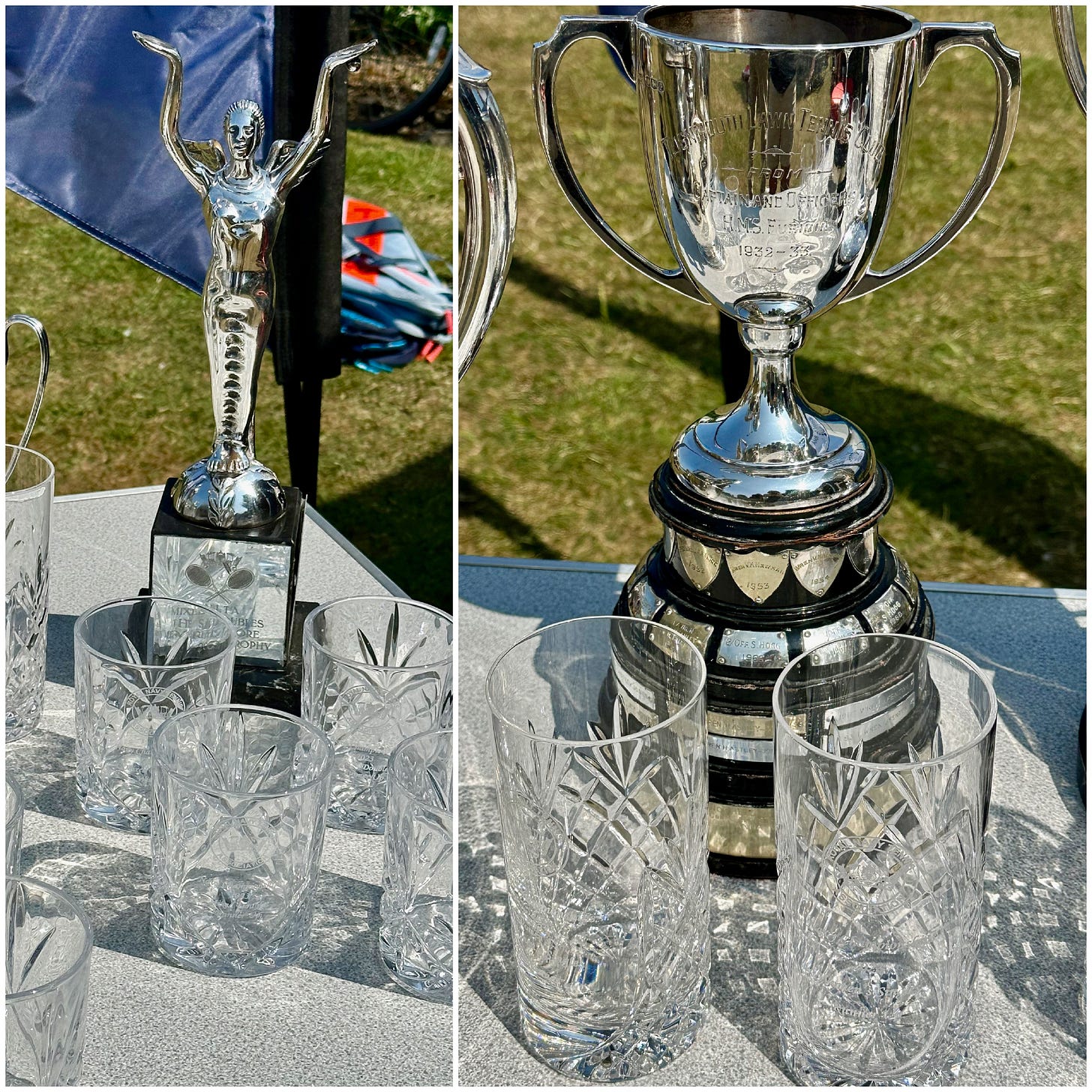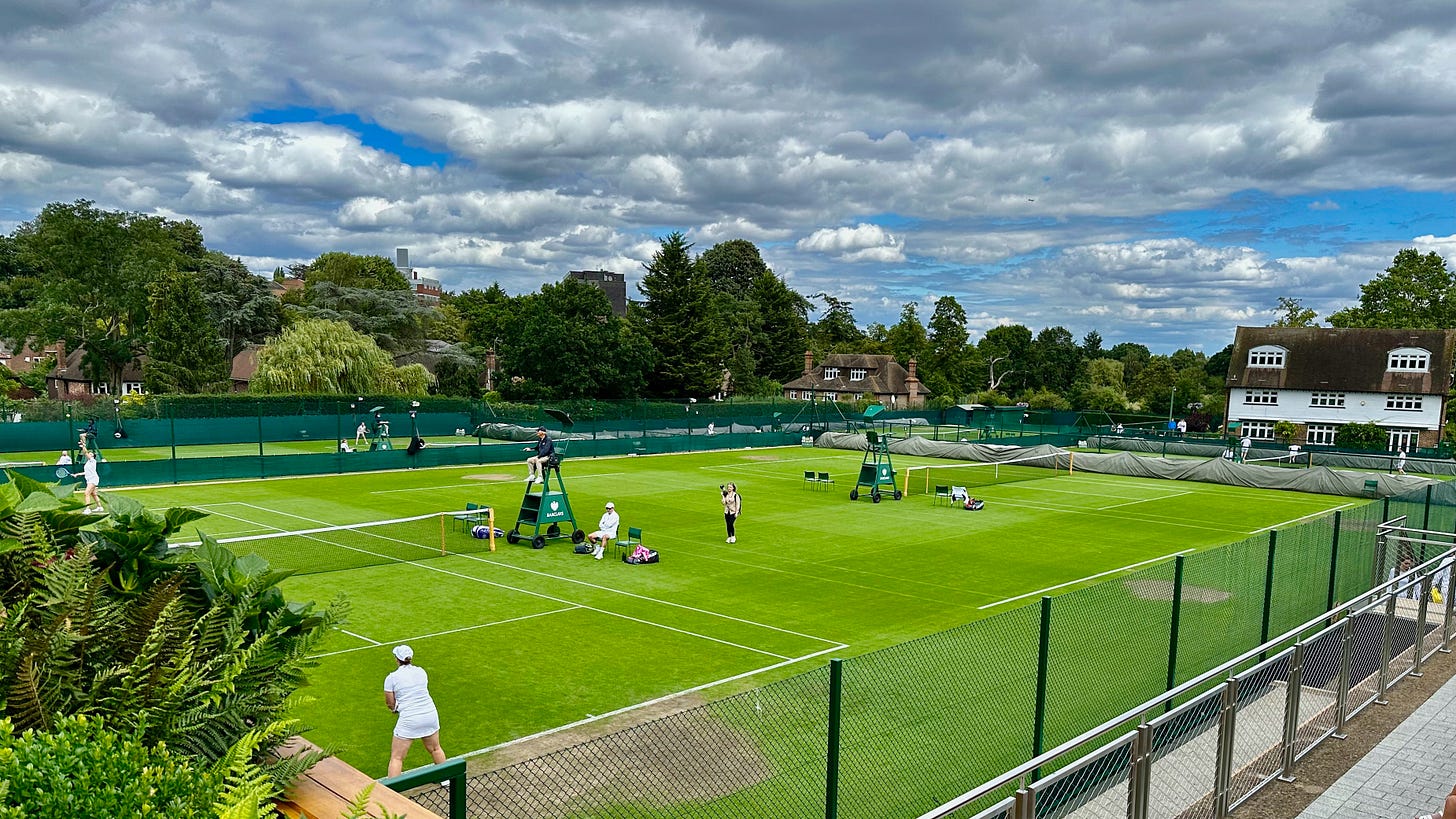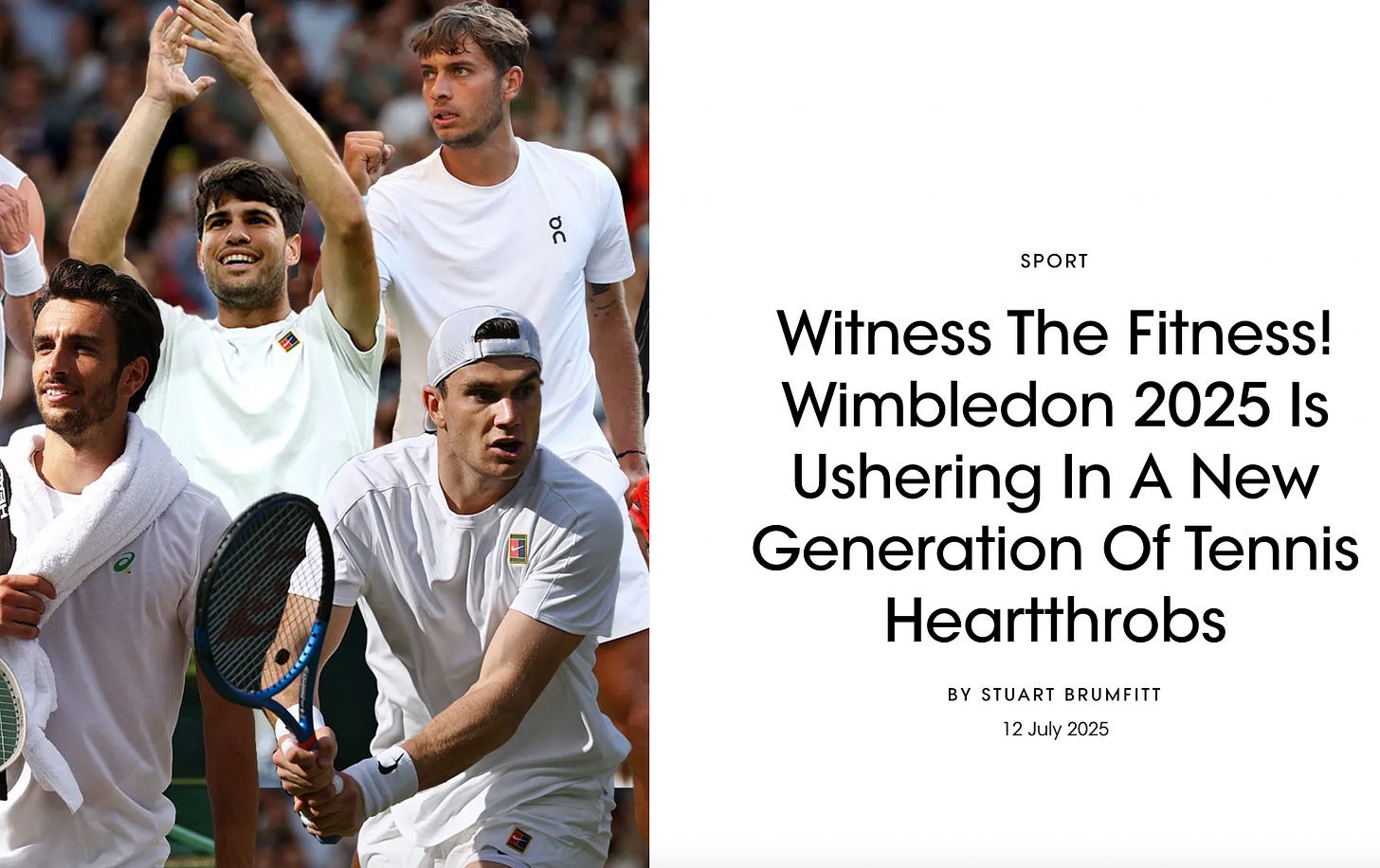Wimbledon's Tactical Tennis
The Armed Forces Championship keeps the AELTC busy after the Grand Slam
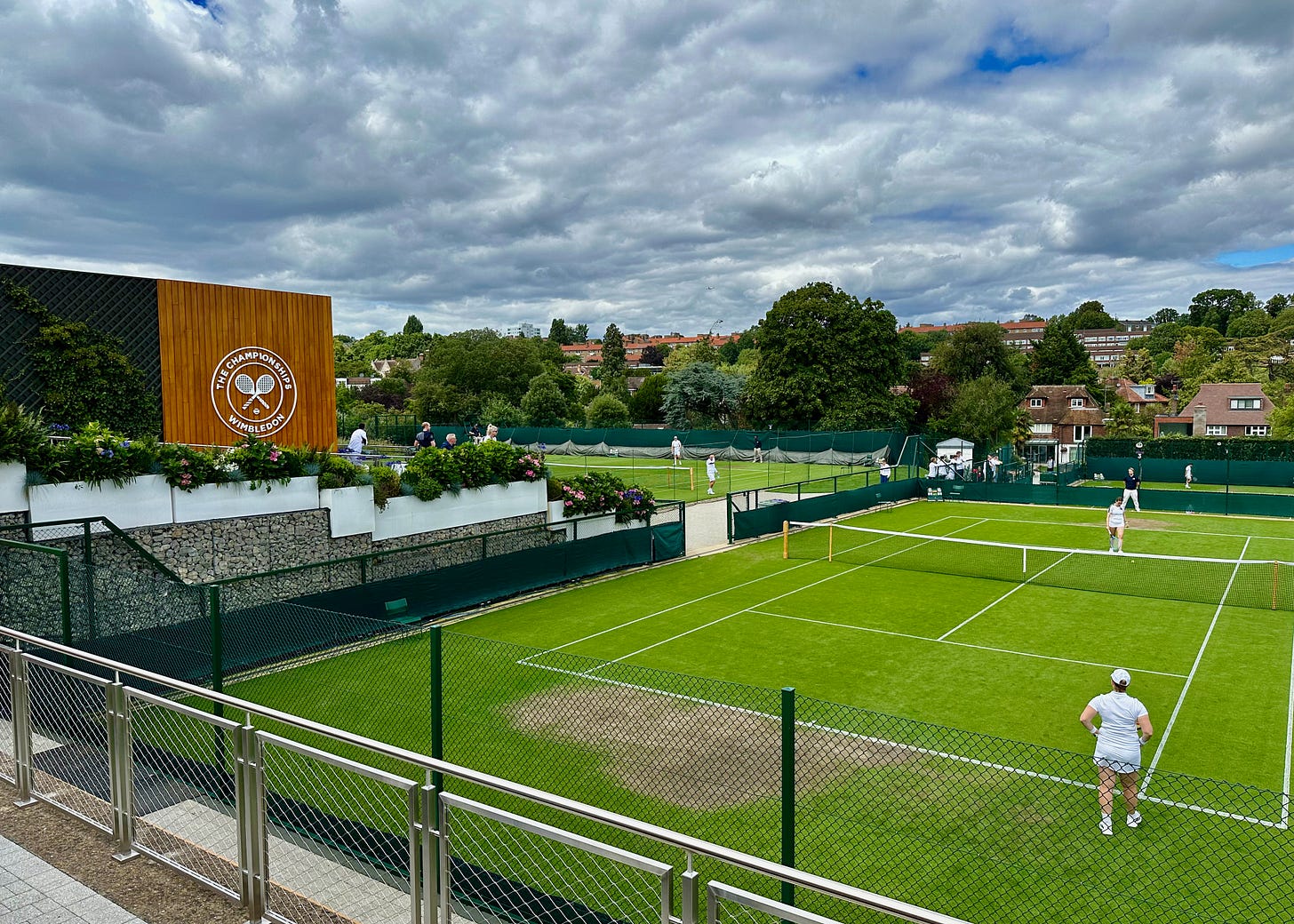
Immediately after Jannik Sinner kissed the Champions Cup on Centre Court after the man’s final at Wimbledon on Sunday afternoon, famed sports commentator Andrew Castle said to his BBC audience, “this is it folks. Time to give the grass a long rest for another year,”
Hardly, Andrew. The All-England Tennis Club stays continuously busy, hosting Play Your Way to Wimbledon, exhibition matches and of course, allowing all those new members a hit. But Wimbledon begins its post-season almost immediately by hosting the Inter Services Team Championships — the hotly contested competition between the UK’s Army, Royal Navy and Royal Air Force. Not only is the AELTC’s granting of its courts for the Armed Forces a gigantic thank-you for all the military stewards during the Grand Slam (and keeping those champagne corks under control), it’s also another English tradition that stretches back at least eight decades.
“The Armed Forces have a long-standing tradition of supporting The Championships, Wimbledon,” said Tony Grattan-Cooper, a former Royal Navy captain, tennis champion and the referee of the match. “Since 1946, personnel from the British Armed Forces assisted with crowd management and providing support to spectators — it’s a visible and respected part of the event.
“And in return, we get to use these hallowed grounds for our own event.”
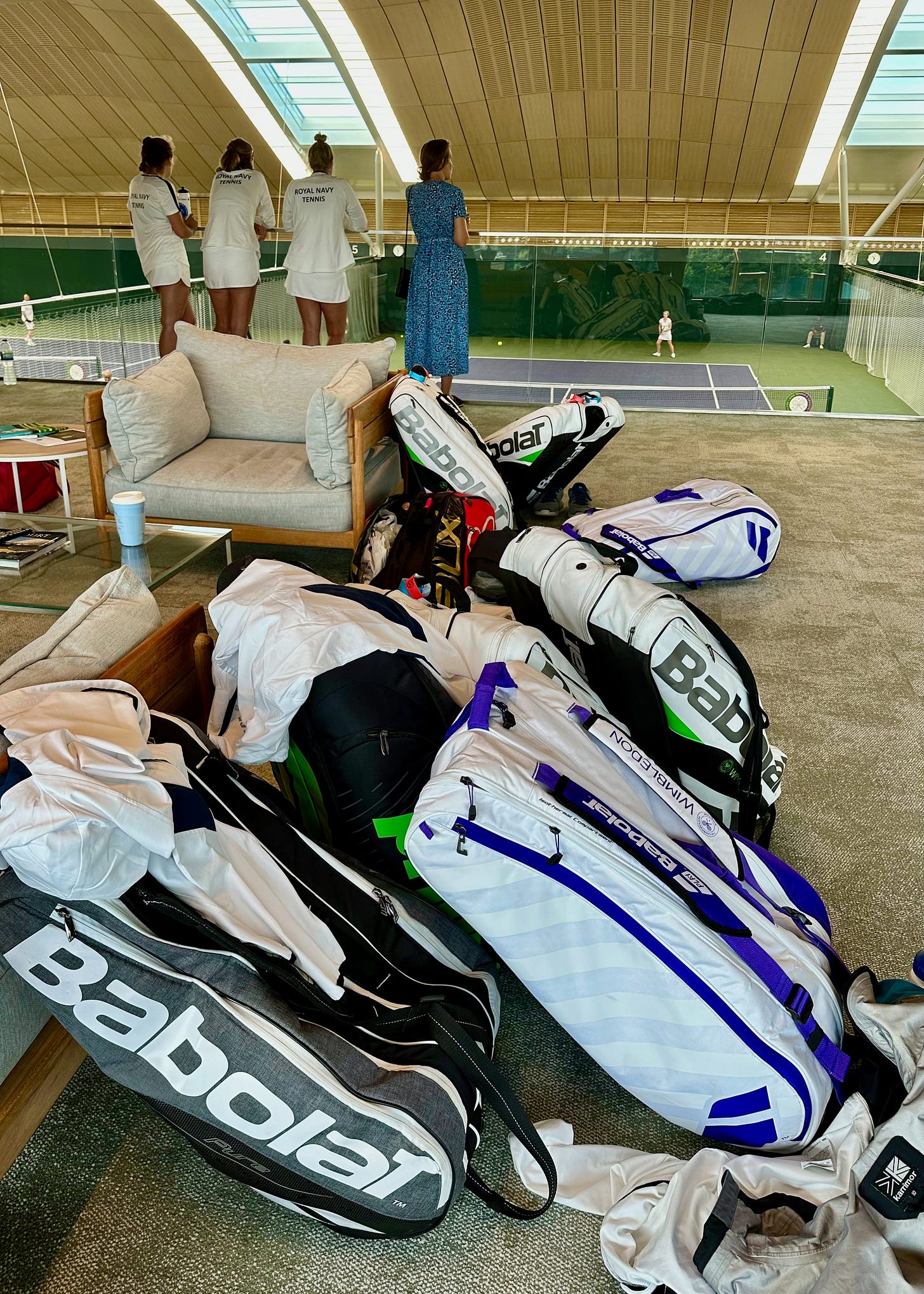
Initially, the Armed Forces arrived at the AELTC to protect the place. During the 1940 Blitz, the Luftwaffe dropped 40 bombs across the city, including on Wimbledon’s Centre Court, which had become a de facto military base. The bomb destroyed part of the roof and enough seats to reduce capacity by more than 1,000.
But towards the end of the war, the AELTC had returned to a tennis club. U.S. soldiers and those from British Empire countries played exhibition matches to raise money for the Mayor of Wimbledon's Resettlement Fund and the Churchill family’s Aid-to-Russia Fund. Wimbledon also hosted the finals of the Europe-wide U.S. forces’ tennis championship — it was the first tennis tournament played there for six years, following the cancellation of Wimbledon and the French Championships due to the war.
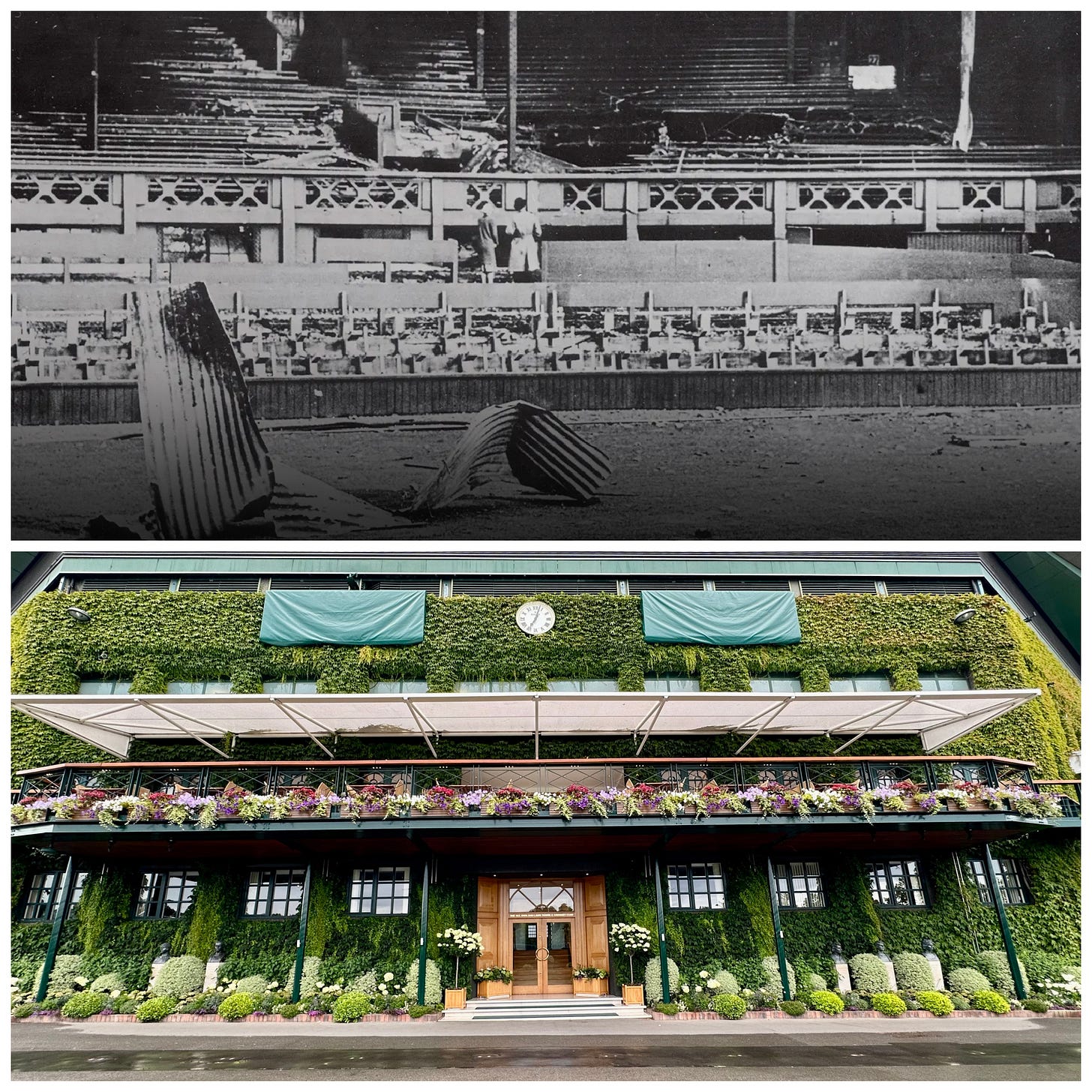
But First, the Topsy-Turvy Wimbledon Finals:
There’s always a little bit of a melancholy sigh in London’s air following the end of Wimbledon. Although the club is nowhere near Central London — in fact, it’s about seven miles away in the SW19 quadrant — big screens are set up at bars and restaurants across the city for patrons and fans to watch. On Saturday, many people were relieved not to have paid the £300+ to watch a piece of the action on Centre Court or the grounds after a tired, nervous American Amanda Anisimova (WTA No. 7, and up five spaces) double-bageled her loss to an amped-up, zoned-in Iga Swiatek (WTA No. 3) in 57 minutes.
From nearly the beginning of the match, Anisimova — tight, nervous and still exhausted from her three-setter against Aryna Sabalenka (WTA No. 1) on Thursday. As Anisimova aimed for the corners and missed by feet and not inches, commentator John McEnroe doomed and gloomed, while Tracy Austin tried to drum up sympathy for the rattled player, who was playing his first Grand Slam and who cried in her after-match speech, thanking her mother for all her sacrifices. “My mom is the most selfless person I know. She’s done everything to get me to this point in my life,” Anisimova said after breaking down. “Thank you for being here and breaking the superstition of flying in. It’s definitely not why I lost today.
"I’m so happy I get to share this moment and for you to witness this in person.”
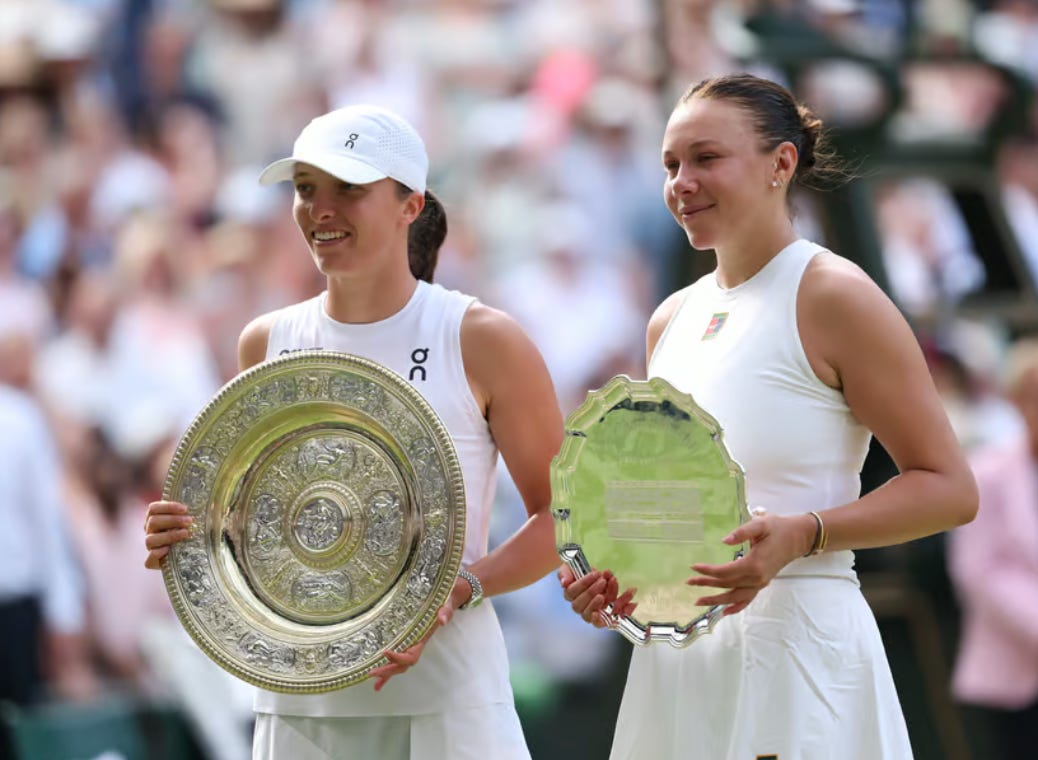
The next day, ATP No. 1 Jannik Sinner sought to avenge his French Open loss to ATP No. 2 Carlos Alcaraz — after holding three championship points on the red clay — and finally ended his losing streak against the Spaniard in about three hours, 4-6, 6-4, 6-4, 6-4. Many tournament officials and others had expressed concern about Sinner’s elbow — strapped with a white sleeve for the final and the fourth-round, two-sets-down, near-miss against an pectoral-torn Grigor Dmitrov (ATP No. 21) — but emerged both dynamic and intent. Sinner had previously lost five matches in a row against Alcaraz and is now looking to reverse that streak in his favour. “I keep looking up to Carlos, because even today, I felt like he was doing couple of things better than I did,” Sinner said in the post-match conference. “So that’s something ... we will work on and prepare ourselves, because he’s going to come for us again.
But Alcaraz was not humble about his and Sinner’s places within the tour. “I’m just really, really happy about having this rivalry with him. It’s great for us, and it is great for tennis. Every time we play against each other, our level is really high,” Alcaraz said. “We don’t (see) a level like this, if I’m honest with you. I don’t see any (other players) playing against each other (and) having the level that we are playing when we face each other.”
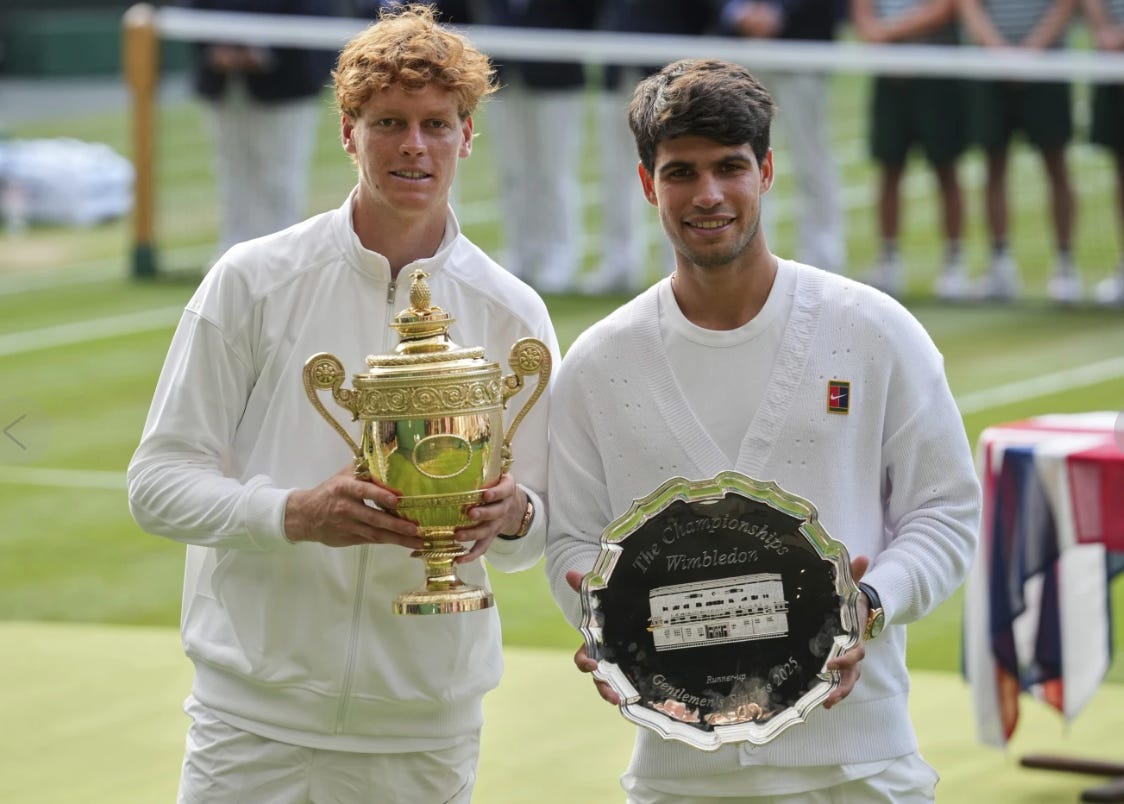
Back to the Military Tennis
When The Championships resumed in 1946, the AELTC used service personnel to help direct people past the bomb damage. Somehow the idea of using the military as ushers stuck, and every year since then, more than 450 members of the military have worked as unpaid volunteer stewards at The AELTC Championships each year. Competition for spots in the usher draw remains fierce, however, and is given to military personnel that have exceeded their duties in some way. Members of the military working as unpaid volunteer stewards, as do around 200 volunteers recruited from the London Fire Brigade, who also take unpaid leave. “This is one of those stand-out experiences you get as a Royal Navy Reservist. You’re part of something special, helping ensure the safety and success of a world-class event,” said HMS Eaglet’s Warrant Officer 1 Gary Doke.
The Inter-Services players, who compete a week after the pros, however, have earned their stripes competing among their clubs in Aldershot, Portsmouth and Halton. Appearing for British Army Tennis at the end of the month will be Lance Corporal Warwok Rai and Officer Cadet Milly Wood, both of whom lifted the trophies for the very first time. At the Navy Championships in Portsmith, AET Ciaran Losh followed his father, Steve Losh's footsteps to become men's singles champion, while Commander Katharine Armstrong will make appearances for the Navy and the RAF have yet to determine their team.
In 2024, the RAF men's team won their first Inter-Services team title in 11 years, while the Army ladies team secured their fifth consecutive title. Players can invite family members to the AELTC support and spectate for the championships, providing a unique opportunity for not just serving personnel but their loved ones to experience Wimbledon also. “I would never have the chance to play at Wimbledon if I was not in the military. The sporting opportunities are so unique,” said Navy Lieutenant Henry Warrender competed in his first Inter-Service Tennis Championships at Wimbledon in 2023.
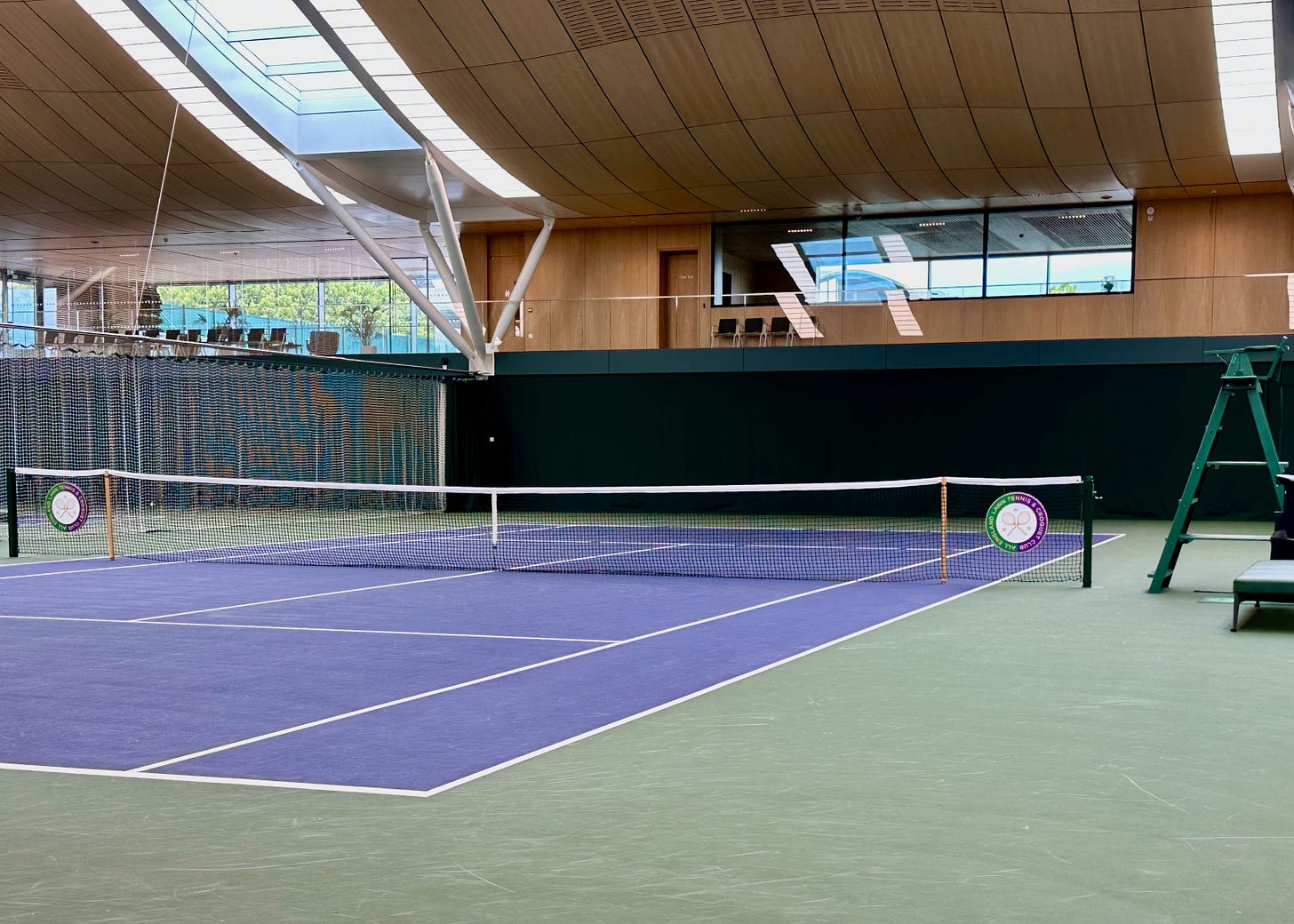
Sport has always been a vital part to the British Armed Forces, and not just the elite academies. Used to help shape “native” peoples into British “models” of manliness and efficiency, the branches have also taken inspiration from abroad, adopting sports like polo and popularising them back in Britain. While football is the most popular sport in the world thanks to the Army’s influence, the Army especially played lawn tennis wherever stationed, including India and Australia, making it incredibly well-liked.
RAF, Army and Navy tennis teams regularly travel abroad to train and compete. Recent years have seen the Performance Teams up against NATO allies in Holland, Belgium and Sardinia as well as host NATO compatriots at the Halton Tennis Club, the home to Royal Air Force Tennis since 1929. Performance Teams have also trained at the world famous IMG Bollettieri Academy in Florida and on the grass of the Stuttgart Open. Top players also compete in prestigious fixtures against Wimbledon AELTC, Surbiton LTC and The Hurlingham Club. The Wimbledon Inter-Services tournament takes place the last week of July.

Things Rally Relished:
Watching the Wimbledon Championships on the big screen at Kings Cross and Covent Garden. The houseboats on the Regents Canal provide a unique backdrop to the gigantic tennis big screens. Fans are also less likely to get hit by a champagne cork; this crowd drinks Pimm’s and cans of Stella.
Things Rally Reproved:
Vogue’s rating of the five “fittest” players at Wimbledon. When done by a gay man, it seems chic, cute and playful. But lesbians choosing the five “fittest” female athletes would be seen as either a) creepy or b) more objectification. This article raises more questions than answers about who has the right to judge the sexiness of others — even tennis players.




